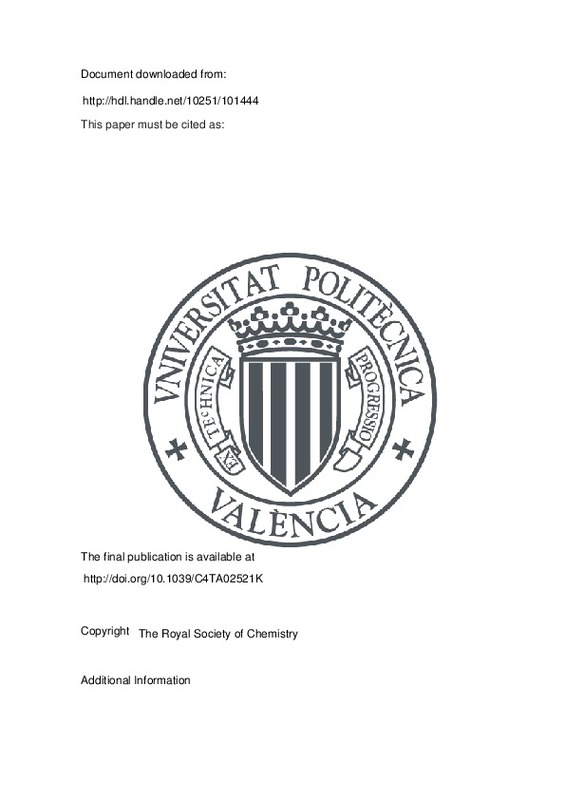JavaScript is disabled for your browser. Some features of this site may not work without it.
Buscar en RiuNet
Listar
Mi cuenta
Estadísticas
Ayuda RiuNet
Admin. UPV
Porous macromolecular dihydropyridyl frameworks exhibiting catalytic and halochromic activity
Mostrar el registro sencillo del ítem
Ficheros en el ítem
| dc.contributor.author | Xiao, Bo
|
es_ES |
| dc.contributor.author | Easun, Timothy L
|
es_ES |
| dc.contributor.author | Dhakshinamoorthy, Amarajothi
|
es_ES |
| dc.contributor.author | Cebula, Izabela
|
es_ES |
| dc.contributor.author | Beton, Peter H
|
es_ES |
| dc.contributor.author | Titman, Jeremy J
|
es_ES |
| dc.contributor.author | García Gómez, Hermenegildo
|
es_ES |
| dc.contributor.author | Thomas, K. Mark
|
es_ES |
| dc.contributor.author | Schröder, Martin
|
es_ES |
| dc.date.accessioned | 2018-05-06T04:14:15Z | |
| dc.date.available | 2018-05-06T04:14:15Z | |
| dc.date.issued | 2014 | es_ES |
| dc.identifier.uri | http://hdl.handle.net/10251/101444 | |
| dc.description.abstract | [EN] New porous macromolecular frameworks (PMFs) have been designed and prepared by the condensation of dialdehydes with aminoacrylonitriles. Two porous materials were prepared by reacting 3,3'-benzene-1,4-diylbis(3-aminoprop-2-enenitrile) with benzene-1,4-dicarbaldehyde and biphenyl-4,4'-dicarbaldehyde to give PMF-NOTT-1 and PMF-NOTT-2, respectively. Adsorption and desorption studies of N-2 (77 K) and CO2 (273-303 K and 20 bar) were used to characterize the porosity of these materials. CO2 adsorption measurements indicate that these PMFs have similar porosity with Dubinin-Radushkevich micropore volumes of 0.142 and 0.144 cm(3) g(-1) and CO2 surface excess uptakes of 28.4 and 28.9 wt% at 20 bar, 273 K for PMF-NOTT-1 and PMF-NOTT-2, respectively. The isosteric heats of adsorption for CO2 at zero surface coverage were 31.9 kJ mol(-1) (for PMF-NOTT-1) and 33.1 kJ mol(-1) (for PMF-NOTT-2). However, N2 adsorption studies at 77 K indicated that PMF-NOTT-2 shows activated diffusion effects due to the presence of some narrow ultramicroporosity. The conjugated systems of these frameworks can be reversibly switched by varying proton concentration in solution and these materials thus demonstrate halochromic properties. PMF-NOTT-1, constructed from shorter building blocks than PMF-NOTT-2, exhibits higher catalytic activity and selectivity in Knoevenagel condensation reactions of malononitrile with benzaldehydes. The advantages of using PMFs as catalysts or adsorbents are their excellent thermal and chemical stabilities and they can be recovered and regenerated for re-use. | es_ES |
| dc.description.sponsorship | We thank EPSRC and the University of Nottingham for support. MS gratefully acknowledges receipt of an ERC Advanced Grant. | |
| dc.language | Inglés | es_ES |
| dc.publisher | The Royal Society of Chemistry | es_ES |
| dc.relation.ispartof | Journal of Materials Chemistry. A: Materials for Energy and Sustainability | es_ES |
| dc.rights | Reserva de todos los derechos | es_ES |
| dc.subject.classification | QUIMICA ORGANICA | es_ES |
| dc.title | Porous macromolecular dihydropyridyl frameworks exhibiting catalytic and halochromic activity | es_ES |
| dc.type | Artículo | es_ES |
| dc.identifier.doi | 10.1039/C4TA02521K | es_ES |
| dc.relation.projectID | info:eu-repo/grantAgreement/EC/FP7/226593/EU/Chemistry of Coordination Space: Extraction, Storage, Activation and Catalysis/ | |
| dc.rights.accessRights | Abierto | es_ES |
| dc.contributor.affiliation | Universitat Politècnica de València. Departamento de Química - Departament de Química | es_ES |
| dc.description.bibliographicCitation | Xiao, B.; Easun, TL.; Dhakshinamoorthy, A.; Cebula, I.; Beton, PH.; Titman, JJ.; García Gómez, H.... (2014). Porous macromolecular dihydropyridyl frameworks exhibiting catalytic and halochromic activity. Journal of Materials Chemistry. A: Materials for Energy and Sustainability. 2(46):19889-19896. https://doi.org/10.1039/C4TA02521K | es_ES |
| dc.description.accrualMethod | S | es_ES |
| dc.relation.publisherversion | http://doi.org/10.1039/C4TA02521K | es_ES |
| dc.description.upvformatpinicio | 19889 | es_ES |
| dc.description.upvformatpfin | 19896 | es_ES |
| dc.type.version | info:eu-repo/semantics/publishedVersion | es_ES |
| dc.description.volume | 2 | es_ES |
| dc.description.issue | 46 | es_ES |
| dc.identifier.eissn | 2050-7496 | es_ES |
| dc.relation.pasarela | S\285650 | es_ES |
| dc.contributor.funder | Engineering and Physical Sciences Research Council, Reino Unido | |
| dc.contributor.funder | European Research Council | |
| dc.contributor.funder | University of Nottingham |







![[Cerrado]](/themes/UPV/images/candado.png)

